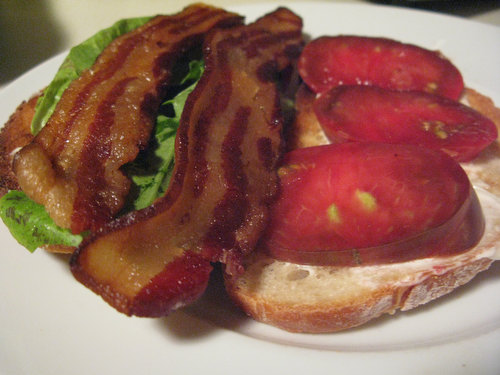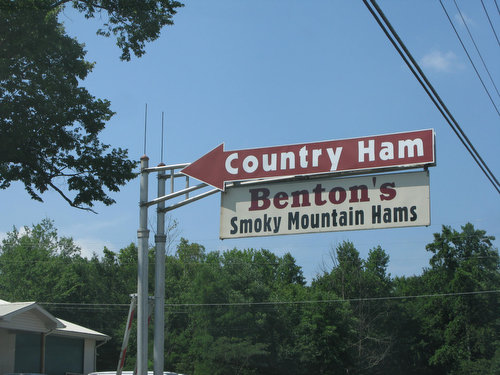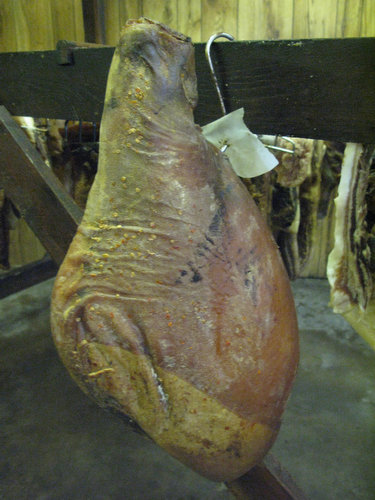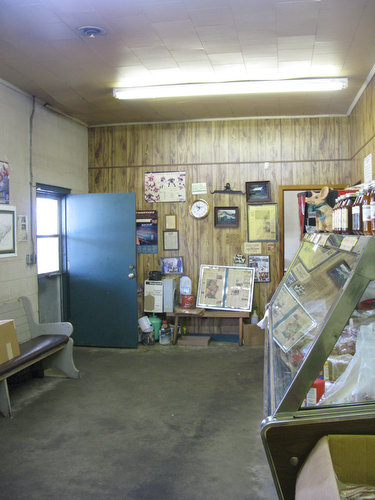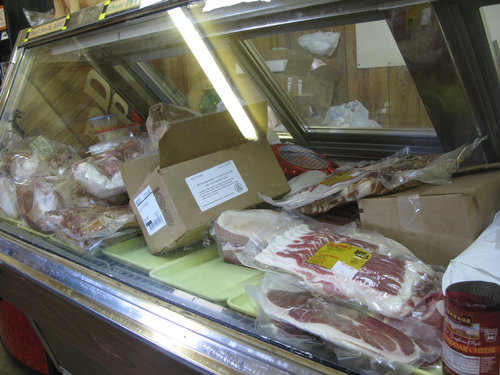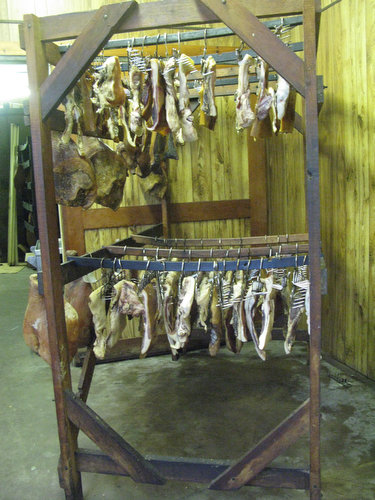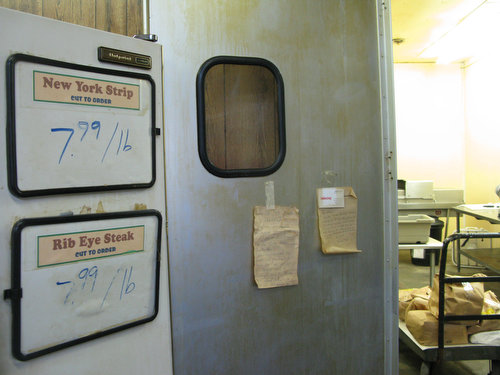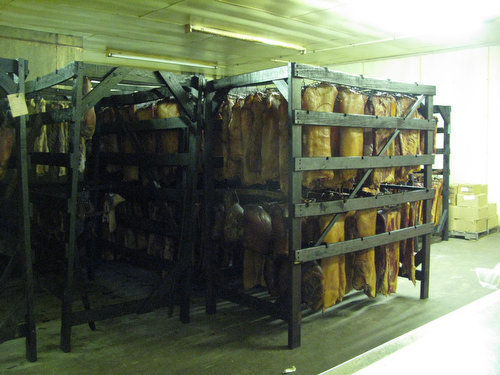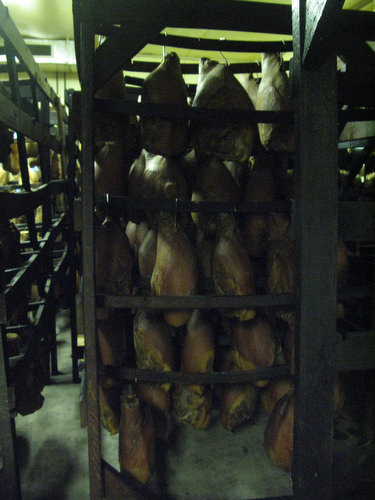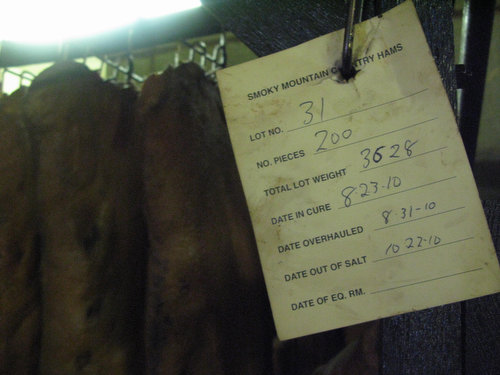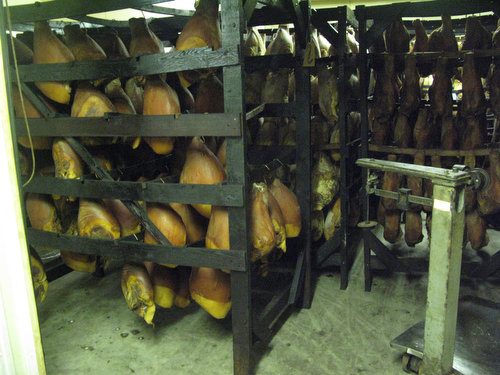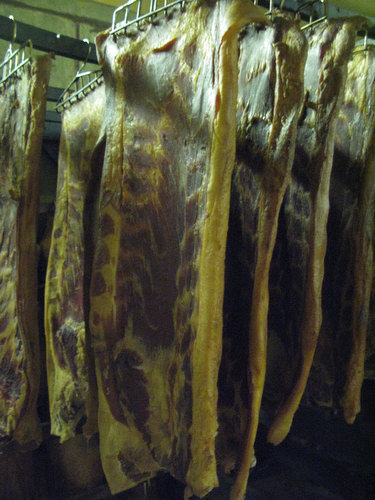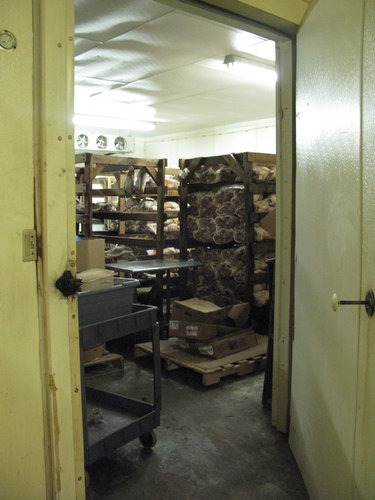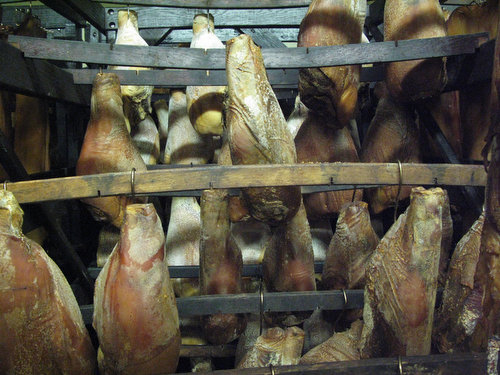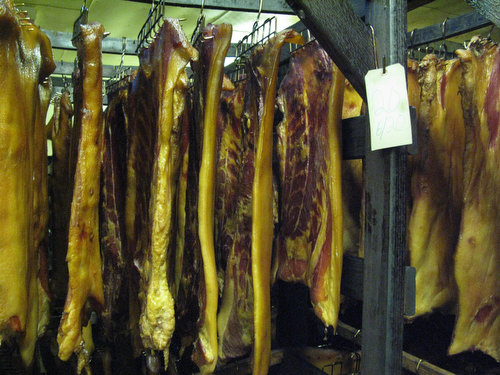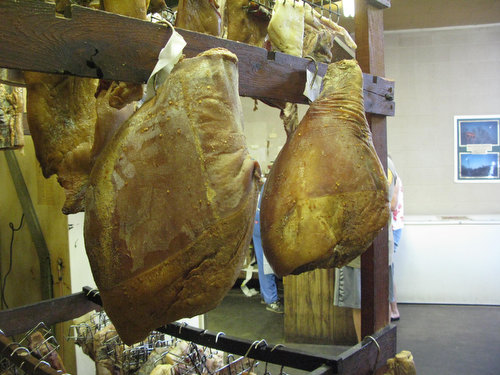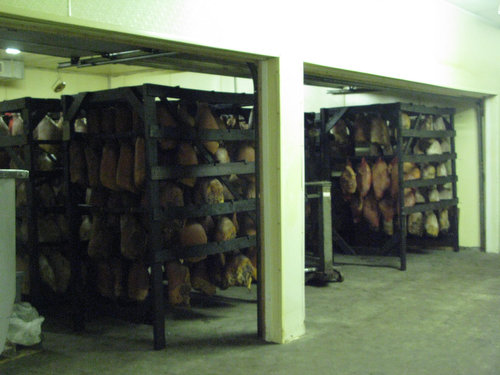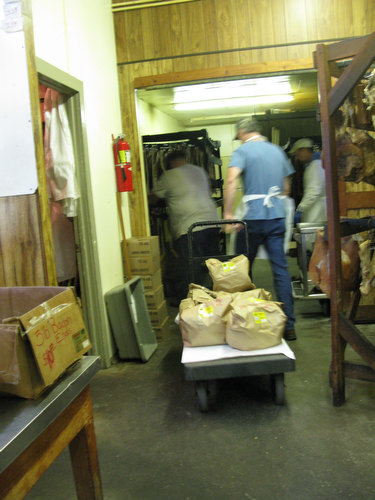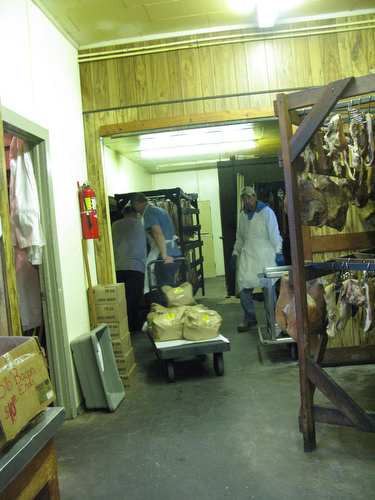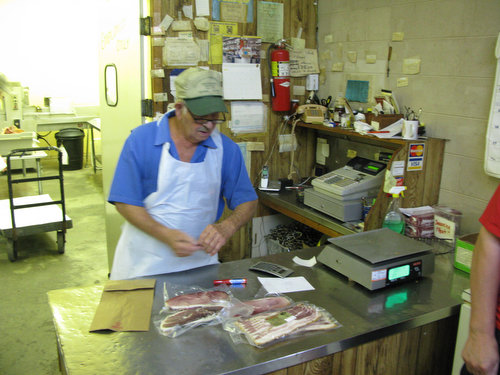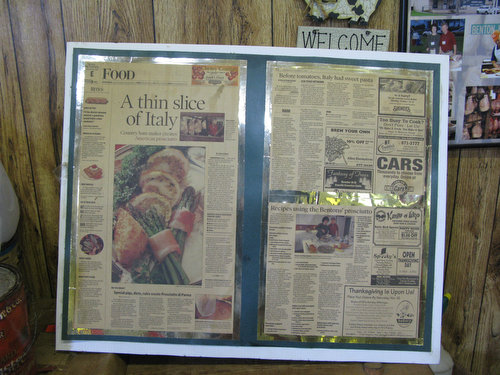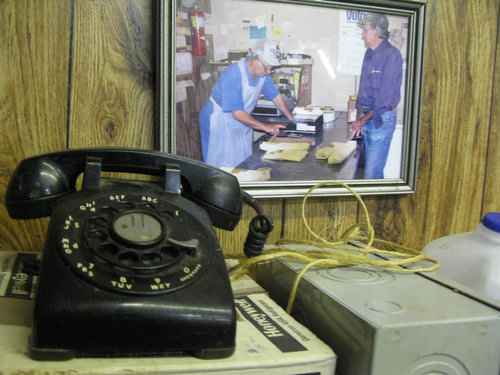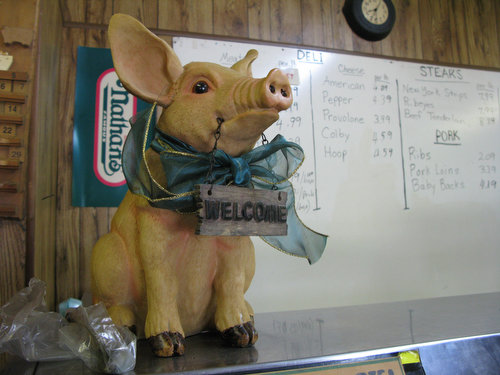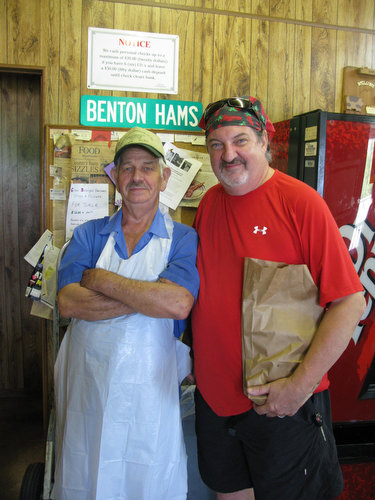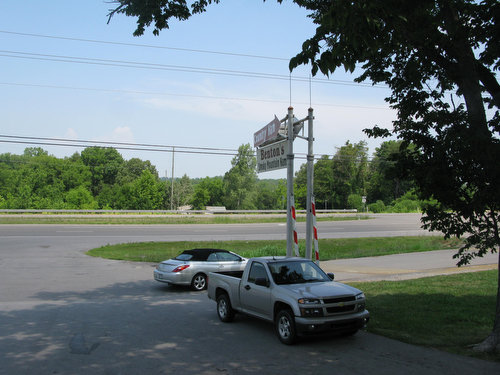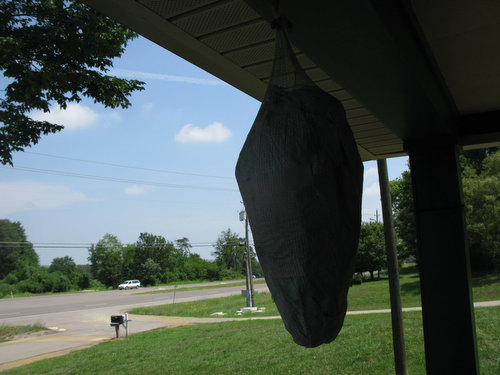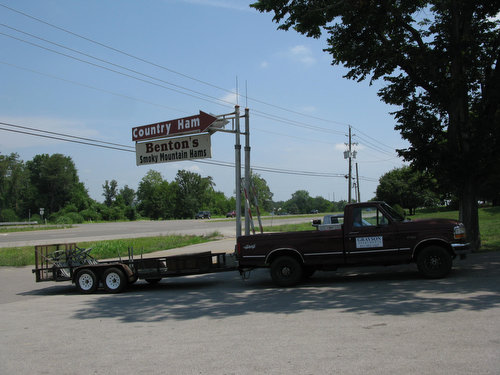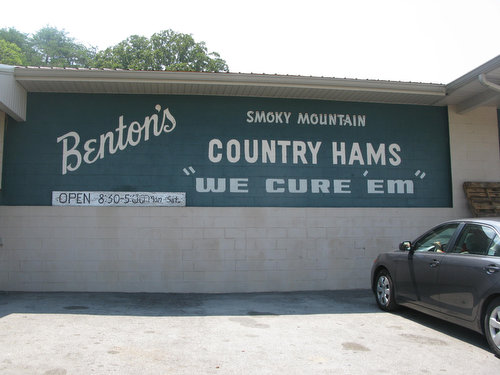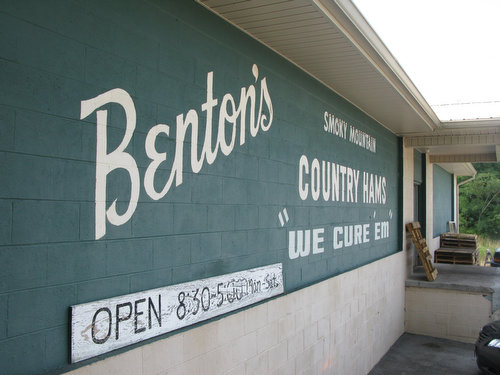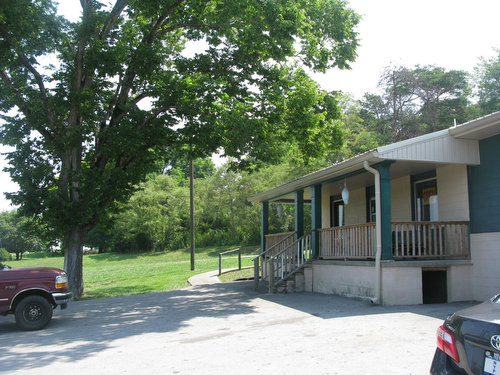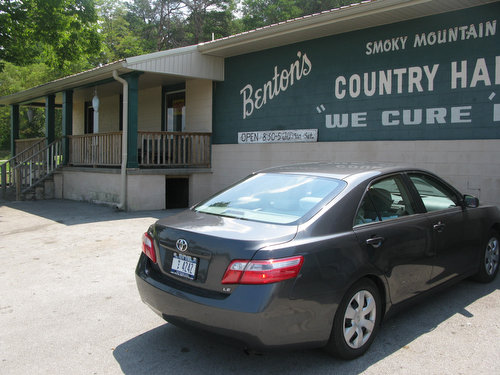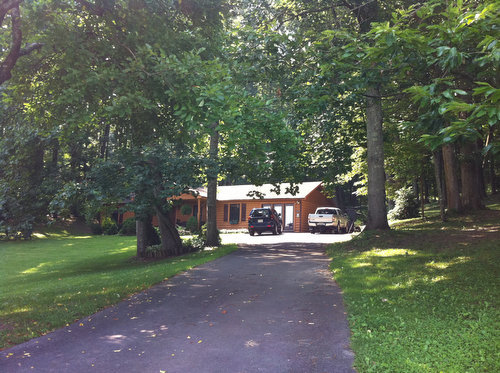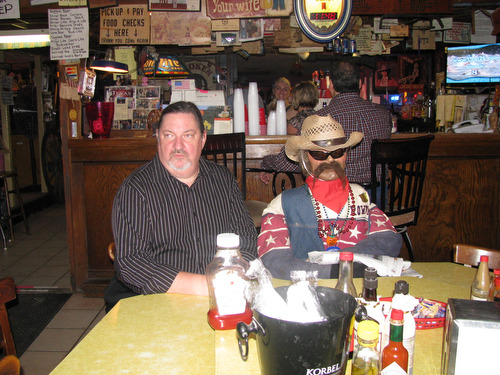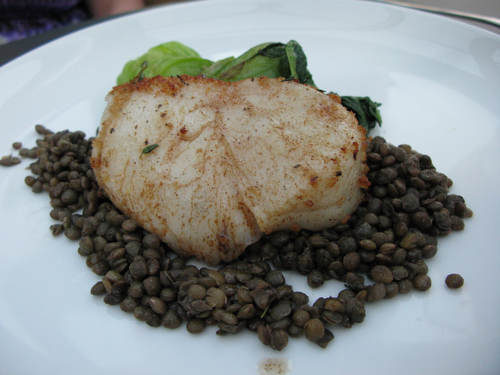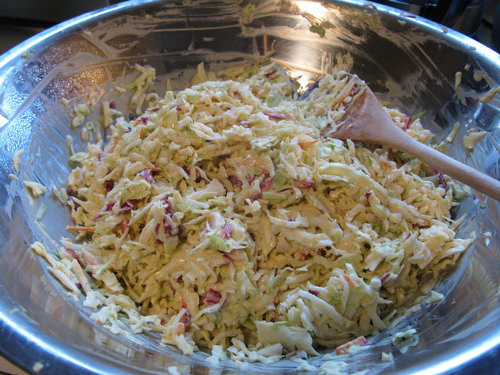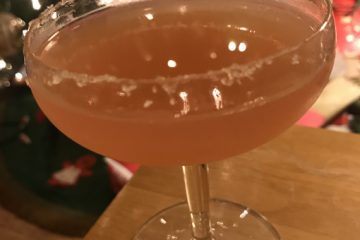We were introduced to the beauty of Benton’s — a smokehouse not 40 miles from our cabin in Tennessee — by dining out in New York, particularly at Momofuku Ssam Bar and at PDT. We finally had the chance to get there ourselves.
When you walk in to Benton’s, it’s hard to imagine that it’s now become a famous, sought-after ham (and bacon) wanted the world over. (OK maybe not the world, but there’s a loooooong waiting list for its mail-order pork products). All you see is a sort of run-down retail operation with wood paneling from the 1960s and a not-so-well organized glass case displaying several packages of vacuum-sealed ham and bacon.
But there are a few hints that this is no ordinary operation. Next to the refrigerator case is this cardboard box full of Benton’s delightful bacon ends:
And then in the corner, there is the contraption, upon which hang many meats:
And then, of course, there is the smell. Smoke. Serious, serious smoke. It hits your nose the second you walk in. It clings to your clothes for hours after you leave.
You can see two rooms from the front of the shop, a refrigerated room, into which there’s no admittance —
— and the curing rooms:
I sort of meekly asked: “Can I poke around back there?” “Sure!” answered Arthur. (More on Arthur in a moment.)
Here are some of the photos I found. Now, according to the Momofuku cookbook, which has an in-his-own-words interview with Allan Benton, the man who originally started the business was named Albert Hicks. A funny parallel: In the 1940s, a guy from New York was visiting Albert Hick’s dairy farm and asked about the ham and bacon he’d been eating. He loved it so much he asked Albert about getting some hams back to New York. 100 hams. Albert went around to the local farmers and found 50 pigs to butcher and cure, and a year later, he had his 100 hams.
(Allan Benton says in the book that farmers today still bring him fresh hams they’ve slaughtered for him to cure and smoke.)
Allan Benton grew up in Scott County, Virginia, in a 175-year-old house that’s “still never seen a coat of paint.” His family raised all their own food, from chicken and hogs to corn and grain. They butchered their hogs on Thanksgiving and worked the weekend to put away the meat.
Allan Benton went to college at the University of Tennessee, and, after a stint as a guidance counselor in Florida, came back to find a new career. Hicks — who had just spoiled $25,000 worth of hams and didn’t know what had happened — was ready to sell the business. Benton took over, and wrote to a lot of educators at universities throughout the South to figure out the problem. Benton figured out the problem, and then set about to make the best hams he could. (Sage advice from his father helped: “Son, if you play the other man’s game, you’ll get beat every time. Stick with quality. There’s always going to be a market for quality. If you make something truly outstanding, there will always be people there to buy it.”)
Allan Benton has owned the business since 1973, but says he only started turning a profit about 5 or 6 years ago. And these days, he’s preaching his father’s advice, too. In the cookbook, he says:
And what I can say for what we’re doing is that I want to make something people want. Something better than what you get at the local supermarket. Because if we do that, there will always be a market. I won’t tell you that we do that. But I will tell you that we honestly strive to do so.
In the cookbook, he also gives us the rundown on how his curing process works. He says they stack the hams with the cure in this cold room for about a week, then they rework the cure — salt, sugar and spices, that’s it — again. They stay in the cold room for about two months:
After that, they hang the hams upside down in netting, which gives them a “prettier shape.” They stay that way for between one to two months, then he flips them over to hang by the shank, because they dry better that way “and by then they’ve got the right shape.”
After that, the hams come out of refrigeration and age at 75 degrees for at least a month, usually much longer.
And after that, they go out to the smokehouse. We didn’t see the smokehouse, but we sure did smell it. Allan Benton says they use hickory and applewood smoke, and it comes from a woodstove he bought from his cousin 30 years ago for $50.
Here are a few more pork photos.
At one point, we saw some staff moving hams from the cold room to the cure room:
After the tour, it was time to buy some stuff. We had a cooler, so we knew we wanted bacon. Arthur, who was working the retail room, helped us.
A poke around at some of the press clippings, photos and other knick knacks:
While we were deciding what we wanted, Arthur told us he’d been working at Benton’s since before Allan Benton took over. A long time. The late 1960s.
The only disappointing news we heard out of Arthur was that Benton’s doesn’t get its hams locally. (Unless you count, I guess, the hams that Allan Benton was talking about that farmers bring him to cure.) Most of the pigs come from Missouri, according to Arthur.
I guess we had visions of hogs running around outside in farmland close to the smokehouse. But instead, as you can see here, see the smokehouse is just off a rural highway.
It ain’t fancy. But the ham and bacon sure are delicious. Smoky. Fatty. Salty. Just terrific.
After we’d made our purchases, we were toying with the idea of heading over to Blackberry Farm for lunch before going on the rest of our journey. So we were checking the map, hanging out, just planning. And two women walked out of the shop, excited as could be.
“Let’s go home and make BLTs!” one said to the other, with not a little glee in her voice.
We would do the same thing.
It would just take us about a week, and our cooler would smell like smoke for days afterwards.
Benton’s Smoky Mountain Country Hams website is here.

